Years ago, I decided to visit Rome during the Christmas holidays. I had been to the city several times during super-heated summer days when every museum stop felt like a visit to a steam room.
In December, things couldn’t have been more different. Skies were overcast and gray, and the air was chilly. I had to layer a sweater under the thin jacket I had brought to get me through the week. Empty streets left me feeling a little lost in a city I thought I knew.
On my first day of touring, I walked to the Pantheon, pulling on gloves to ward off the cold as soon as I stepped inside the 2,000-year-old stone building. I had visited in summer, but I had never seen the contours of the building from wall to wall and the details in the massive dome. There were always too many people.
I looked at the shaft of light streaming through the oculus and lingered inside, amazed at my luck of having the place almost to myself.
By the third day, I had warmed to the cold. A visit to the always busy Colosseum was quiet and slow paced. People-watching from the top of the Spanish Steps revealed locals, who seem all but invisible during high season.
When I was ready to rejoin the world, I went to St. Peter’s Square on Christmas Eve. I wanted to see what it felt like to be at the Vatican on the biggest Christian holiday of the year — and so did thousands of others. It was a beautiful and memorable spectacle. I felt grateful for having come in winter, knowing a quieter and more reflective Rome was waiting for me on the other side of the river.
What about you? Are you game for experiencing some of the Mediterranean’s most popular cities in the low season? Here’s the good news: Winter in the Mediterranean can be milder than other places,. Sure, weather can be chilly but it’s also changeable weather, so don’t let that stop you. It’s also a great time of year to indulge yourself in art and culture (not to mention wonderful cafes, wineries, boutiques — January is a big sale time in Europe — and other simple pleasures).
Since that first winter visit to Rome, I’ve gone back several times and want to share some places where you can especially savor art and discover cultural gems.
Florence

The thing to do in Florence is immerse yourself in everything, whether it’s art and architecture (the capital of Tuscany reportedly contains more art per square mile than anywhere else in the world), wine tastings, fine dining or shopping for high fashion and leather goods. The small, walkable and picturesque city — whose history takes you from Roman times to the Renaissance and beyond — never disappoints.
The classics
Start your tour of Florence in the Accademia Gallery because it houses one of Michelangelo’s most famous works. No matter how many times I have seen the sculpture of David in photos, nothing prepared me for the scale and beauty of seeing it in person. And don’t skip out on the rest of the museum. Its Museum of Musical Instruments includes some rare pieces that belonged to the powerful Medici family. You can hear what the instruments sound like when they’re played, thanks to multimedia displays. One of the most valuable items: a tenor viola made by Stradivari in the late 17th century.

When you’re ready, move on to the Uffizi, which can be overwhelming for the amount of artworks within. I encourage you to craft your strategy before you get there! “The Birth of Venus” is always on the top of my list (in winter months there may be a break from the crowds). Botticelli likely never dreamed people in the 21st century would still be seeking out his shy goddess of love rising from a clam shell. Pace yourself in the galleries filled with famed Renaissance artists. Don’t miss “Primavera,” also by Botticelli, or Caravaggio’s disturbing depiction of Medusa, and also wander into random galleries and spend time discovering lesser-known gems.
Other key sites
You cannot go to Florence without visiting the 600-year-old Duomo, the massive, ornate church officially known as Santa Maria del Fiore Cathedral in the city center. I recommend taking the almost 500 stairs to the top of the amazing dome by Brunelleschi, a feat of architecture that offers views of the city. When you’re ready for some retail therapy, head to the Florence Leather School, where students apprentice in all aspects of leatherworks. The gift shop features handmade goods that range from bags, including messenger bags, to gloves and jackets.
I like “house museums” because they often depict how a family lives, from the wealthy to the everyday person. Casa Martelli provides a glimpse of aristocratic life in 17th-century Florence. The design of the house is as interesting as the art within: murals that turn rooms into countryside retreats and lavish halls decorated in bright colors.
Favorite discoveries
Located in the heart of the city, Florence’s Mercato Centrale. The space, located in the historic San Lorenzo Market, has only just celebrated its tenth anniversary. There are two floors; on the ground level you’ll find the more typical food stalls that you see in markets. Season permitting (I was there in March which is not an abundant time of fresh foodstuffs), you’ll find flowers, fresh fish, butcher shops, locally grown vegetables and wine (plus a few opportunities to buy souvenirs). More rewarding is the floor above, which is a festive food hall, where you can find freshly prepared dishes ranging from roast chicken to anything made with truffles. There are a few shops here, too, and they sell pricier, artisan-styled gift items (like 36 euro ceramic pitchers of olive oil).
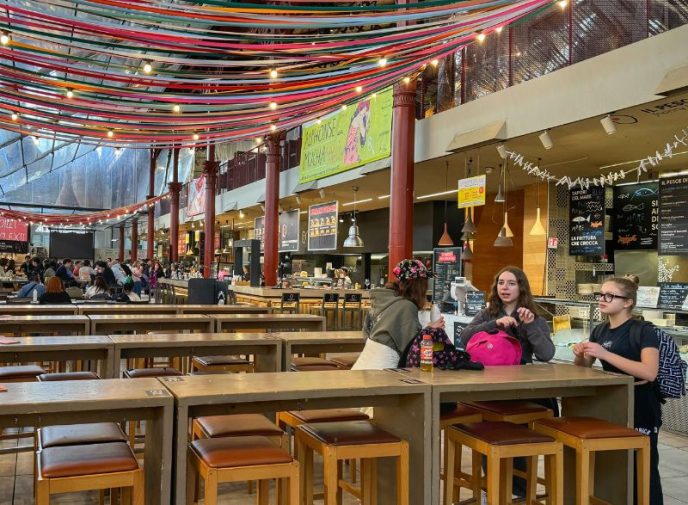
For me, one museum find that took me out of the Renaissance and into the 20th century was the recently revamped House of Gucci. It’s arty and wacky and visually exciting and you don’t have to be overly enamored with its collection of gowns, tuxedoes and handbags to find it, frankly, fascinating. There’s a gift shop with one of kind items (some great shoes and purses). This is a bit tricky to find (likely on purpose) because the entrance is unmarked, just note that it’s #10 (and it’s next door to a Gucci restaurant by Michelin chef Massimo Bottura.
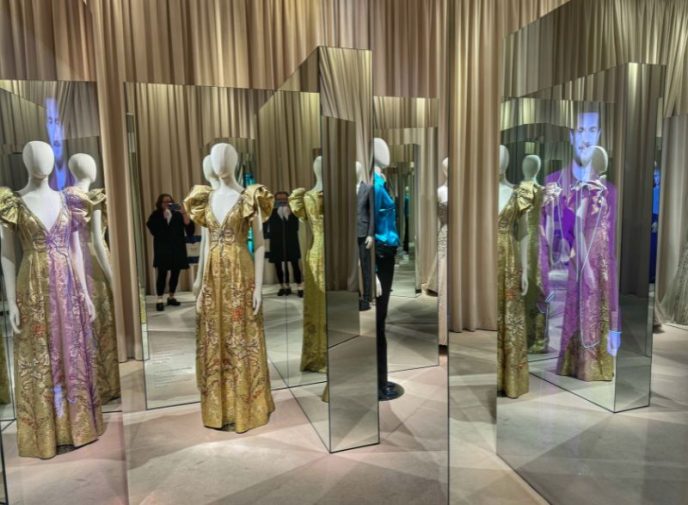
When it comes to places of worship, there’s no lack of them in Florence. The Orsanmichele rarely makes most tourists’ lists and it should. It’s housed in a 14th-century market where wealthy merchants of the day competed to make this the finest church around. The result: stunning sculptures of saints outside the building and an ornate, over-the-top tabernacle inside.
If you’re craving a really nice, really local Florentine lunch, the best meal of my most recent trip in March 2024 was Il Santo Bevitore. It’s on the “other” side of the Arno (just cross the Arno via the Ponte Vecchio bridge, take the first right, and it’s about three blocks down in a neighborhood called Santo Spirito. The menu is small, seasonal and thoughtfully chosen. Same goes for the wine list. I got lucky on a Tuesday afternoon and scored one of the last tables; it’s a locals’ place so make sure to book yours ahead.
Need to know
Expect daytime high temperatures in the 50s F and lows in the 30s and 40s F in January through March. Cruise ships dock at the port of Livorno, about 75 miles away; you may want to book transportation to and from the ship through the cruise line. Other places to visit in the region include the medieval walled city of Lucca and the ever-famous Leaning Tower of Pisa.
Barcelona
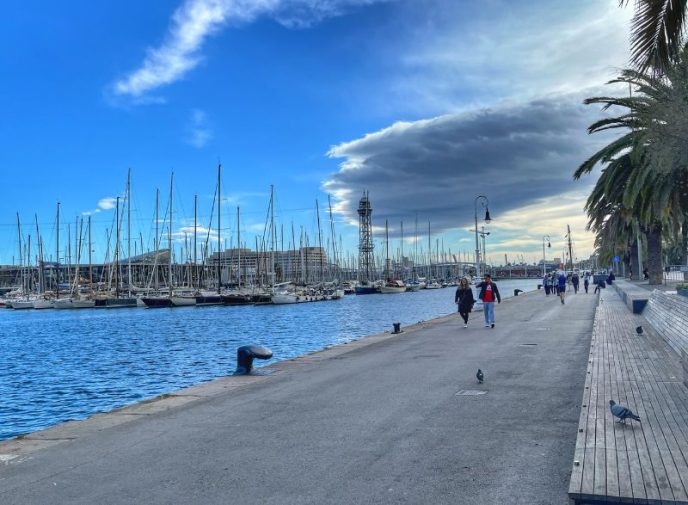
On my first visit to Barcelona, I thought I would spend most of my time hanging out at the beach in Barceloneta, walking along the famed Las Ramblas boulevard, eating endless plates of tapas, and biking around city streets. They were tons of fun — and yet what struck me was how immersed I became almost by accident, in the city’s Roman and Gothic histories, and its architecture, from ancient to contemporary. I hope you, too, will come to understand the beauty and fiercely independent character of this city.
The classics
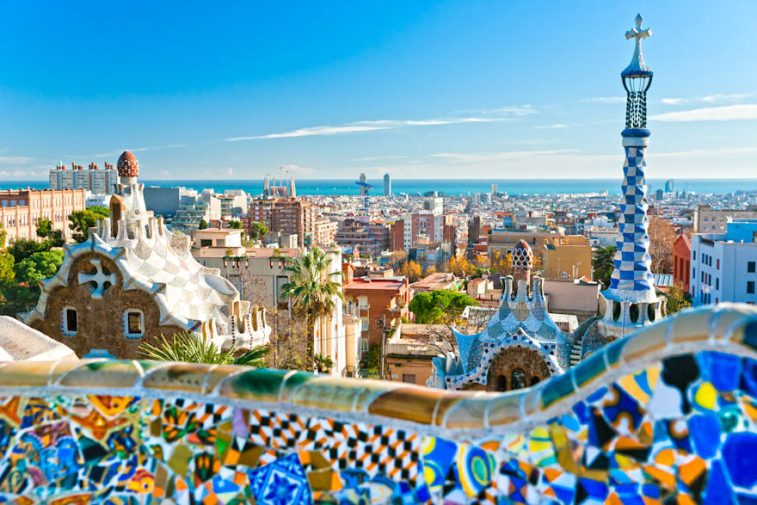
The first one is easy: architect Antonio Gaudi! It’s easy to fall in love with with his work, no guidebook required. I stepped inside the architect’s La Sagrada Famiglia cathedral and surrendered to his very personal tribute to the glory of God. Symbols of nature abound. Impossibly tall tree-like columns line the nave. Rays of sunlight pour in through stained-glass windows that act like a color wheel, setting everything aglow. No Roman Catholic Church can prepare you for such a singular, artistic triumph of faith and religion. It remains a work in progress (Gaudi died before he could finish the cathedral); the city is expected to complete it in 2026.
A half hour’s walk up to Carmel Hill led to Park Guell, another Gaudi creation. Sit peacefully on the serpentine bench inlaid with tile mosaics that snakes around the main square and people-watch. From here, you can look down on what was supposed to be a neighborhood of posh houses set into a large park. Only a few of the houses ever got built (Gaudi lived in one of them, and it’s now a namesake museum), but the gateway, winding footpaths, plaza and other remnants of the planned community remain. The large mosaic lizard is a must-see. I fell for the giant, concrete bird nests resting atop columns that lined a footpath.
Next Gaudi stop: La Pedrera, originally known as Casa Mila, which was commissioned to house a family home and apartments. The nine-story stone building appears to defy gravity with a floating, undulating facade. To walk inside is to witness Gaudi’s genius at work. I couldn’t find a straight line in sight. It was controversial for its design when it was built at the turn of the 20th century, eventually fell into disrepair and was restored in the 1980s.
Other key sites
On a walking tour of the Gothic Quarter, you’ll find remnants of ancient Roman walls and a cathedral that serves as a counterpoint to Gaudi’s modernist creations. Officially known as the Cathedral of the Holy Cross and Saint Eulalie, the church reflects layers of time periods. It was started in the 1200s but the massive gothic facade was built 500 years later. The most surprising site: 13 live geese that wander in the cathedral’s garden and cloisters. The number of geese is a living tribute to St. Eulalia, also one of the city’s patron saints, who kept geese and at age 13 was martyred and crucified. She’s buried inside in the crypt.
Just behind the cathedral is the Museum Frederic Mares. It holds a bit of everything, which is part of its charm. The namesake Mares, a sculptor, collected things he liked, which included everything from 13th and 14th century Spanish sculptures to modern mundane items such as eyeglasses, canes, pipes, umbrellas and other objects that gave him pleasure.
Favorite discoveries
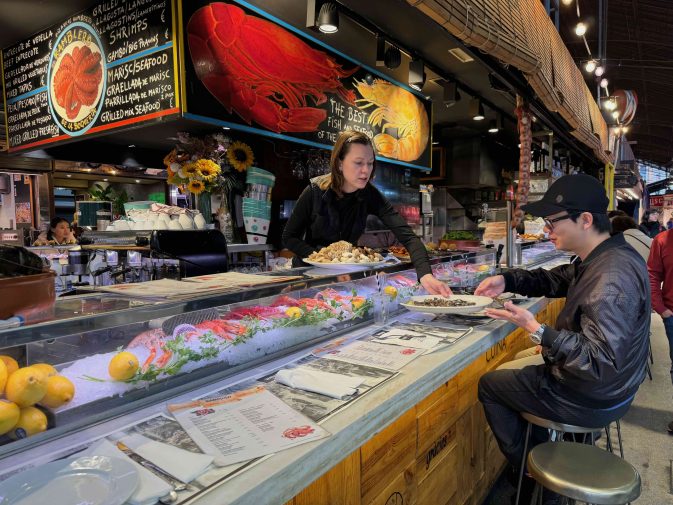
Housing another style of artistry is Mercado de la a Boqueria, Barcelona’s fabulous, sprawling market. It’s located about midway up Las Ramblas and the covered market has something for just about everyone. You can pick up freshly made picnic fare, baked goods and juices, buy fresh fish, meat or produce, and/or belly up to a cafe-bar for seafood cooked right in front of you. Other options (I chose all, ultimately): splurge on decadent pastries and candy, and even buy fancy food gifts for your friends at home.
Toward the city’s park-like Vallvidrera neighborhood is CosmoCaixa, a science museum complex. “Flooded Forest,” which re-creates a small patch of the Amazon rainforest, is an exhibit inside a glass-walled exhibit. Here you may encounter an occasional rain shower amid indigenous plants and creatures that include piranha and caimans. When you’re ready for a nosh, head to Caelum (Latin for “heaven”), a bakery with a lot of buzz. It specializes in drinks and desserts made by monks and nuns from around Spain. The cafe opened about a decade ago in the Gothic quarter and serves everything from tea biscuits and cider cakes to beers made by Trappist monks.
Need to know
Expect average daily temperatures in the mid- to upper 50s F, January through March. Cruise ships dock just outside of the city center and you’ll need to taxi into the heart of Barcelona. Warning: Pickpockets are rampant in Barcelona, particularly on Las Ramblas. Leave fine jewelry, fancy cameras and most of cash in your cruise suite or hotel room safe.
Nice

Did you know that a few years ago, UNESCO designated Nice as the “winter resort town of the Riviera?” Part of this pays a nod to its geography, bordered by the Mediterranean Sea and the mighty Alps. It’s also because the city is filled with cultural and historic museums and monuments and its climate is comfortable. In fact, Nice-in-winter hasn’t been a secret since at least the 1860s, when snowbirds, having discovered the city was pretty nice in cooler months, created the La Promenade des Anglais (the English Promenade).
Classics
The Musee d’Art Moderne et d’Art Contemporain, Nice’s contemporary art museum, showcases a collection that spans from the 1950s to today, including pop art, realism and more. Don’t forget to check out the rooftop exhibition space which has fantastic views of the city. Painter Henri Matisse was one of Nice’s legendary residents. Musee Matisse houses one of the largest collection of his works (Musee Matisse is temporarily closed from mid-February – late May in 2024).
Marc Chagall was another of the many artists who called Nice home, and Musee Nacional Marc Chagall honors his dreamy, surreal works. Don’t miss the on-site bookshop, which in addition to carrying Chagall’s work in various forms (from books to prints to notebooks) also showcases jewelry and cultural artifacts.
Also known as Castle Hill, the Parc de la Colline du Château has fabulous views of the sea and city from its perch about 300 feet above the Mediterranean. You can hike up to the park at the top — or take an elevator.
Other sites
Vieux Nice, the city’s old town, is a marvelous warren of ancient streets and houses, with galleries, boutiques and cafes. The Charles Nègre Photography Museum offers temporary monographic exhibitions and thematic exhibitions that range from old photography to digital images.
Favorite discoveries
Winter in Nice, which has culinary influences from Italy as well as France, is a great season to tuck into comfort food, like daube niçoise (beef stew) and pistou soup (garlic, basil, olive oil but no pine nuts as with traditional Italian pesto). Drink hearty red wine from the region.
At the boutique perfumer Molinard, in old Nice, you can take a class on blending your own signature scent.
Need to know
Temperatures in Nice from December to March average in the mid-50s F. Star Legend docks in the charming village of Villefranche; you can take a take a 10 minute train to Nice’s Nice-Ville stop, sign up for a Windstar shore excursion or book a taxi.
Rome
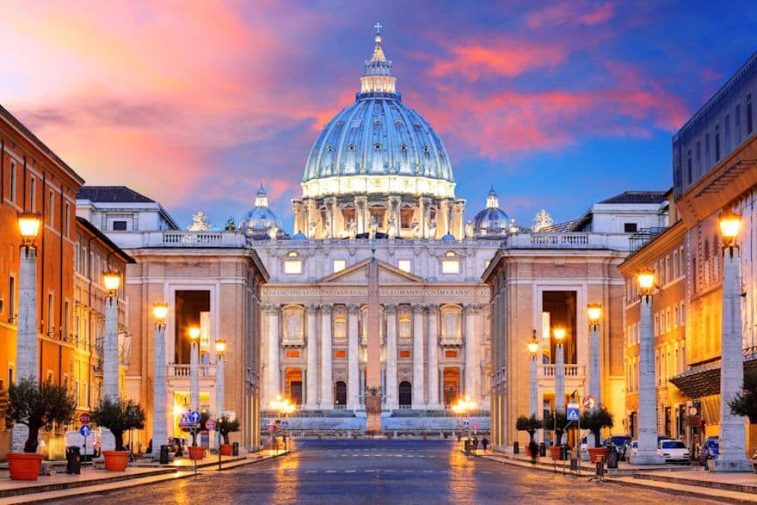
During ancient times, the capital of Italy was the first city in the world to notch a population of one million residents. Nowadays the number of people in the metro area has quadrupled, yet the city stays close to its ancient self. Cafe-lined piazzas, Renaissance fountains, chic fashion boutiques, landmark artworks and inspired restaurants underscore the link between past and present.
The classics
The Colosseum is the largest ancient amphitheater in the world, holding more than 50,000 people at a time. It was completed in 80 AD. I try to imagine the rows and rows of seats filled, and fans cheering on — the lions or the gladiators? More than a decade ago, scientists discovered traces of red, green and black paint on the Colosseum’s walls, suggesting the building had more vibrant colors in their day.
The city has about 200-plus fountains, with the Trevi Fountain being one of the most popular with visitors. It’s an 18th century Baroque rendering of Oceanus in the center, standing amid tritons and a chariot pulled by seahorses. Put your back to the fountain, toss a coin in and make a wish (such is the tradition). To see more of the area’s treasures, cross the river into Vatican City. St. Peter’s Cathedral, center of the Catholic world, and the Sistine Chapel in the pope’s quarters next door are must-sees.
Or indulge in an easy stroll among Piazza Navona, Piazza Farnese and Campo de’ Fiori and the Spanish Steps and just soak in the atmosphere.
Other key sites
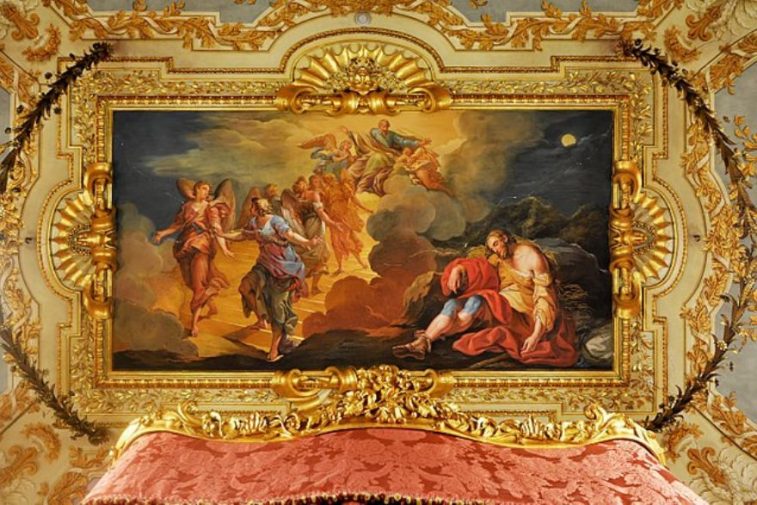
For a complete departure from Rome’s ancient and Renaissance past, visit the museum home of artist Giacomo Balla, known as Casa Balla. Contemporary pieces of furniture and artwork are on display throughout. Balla may not be a household name but this oh-so modernist dwelling offers a little-known stop for design lovers. I forever recommend the Galleria Doria Pamphilj to friends visiting Rome. It’s a family home filled with frescoes and statues that stand guard over heavily mosaic floors. Because so few people know about the museum, I feel like a personal guest, stalking the halls of the grand building that’s been home to the Doria Pamphilj family since the 16th century.
Favorite discoveries
The Capuchin Crypt, affectionately known as the Bone Church, lives up to its creepy moniker. No one quite knows why the brothers of the Capuchin religious order kept the bones of thousands of members that were buried between 1500 and 1870 — and decorated five chapels with artistic displays of their skulls and scapula. The rooms are named for parts of the body (Crypt of Skulls, Crypt of Pelvises, etc.). The Capuchins, by the way, feel it’s not an oddity but rather a way for people to reflect on their own mortality.
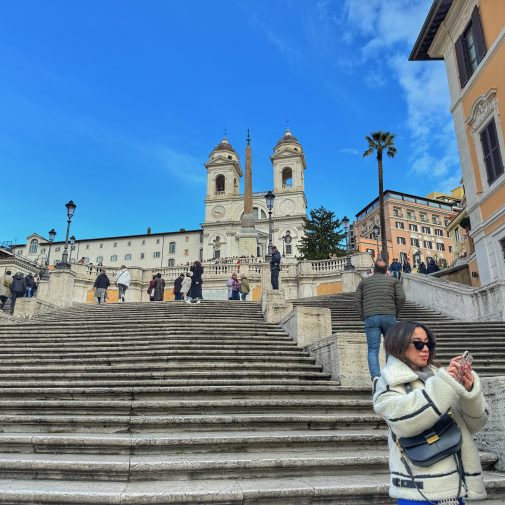
If you want to get a nice overview of the city, head to department store Rinascenti, which has a charming alfresco bar and cafe on the roof.
Need to know
Daytime temperatures in January through March are in high 50s to low 60s F that may drop into the high 30s to the low 40s F at night. Cruise ships dock in Civitavecchia, less than 50 miles away. (Express train service to Rome takes about 40 minutes and Windstar offers a “Rome on your own” motorcoach transfer from ship to city and back. )
Athens
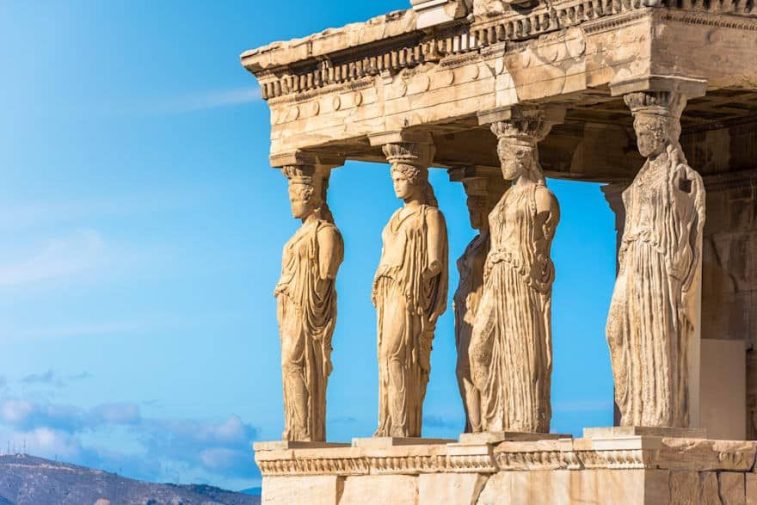
Few cities have given as much to the world as Athens. The city’s tenets of philosophy, literature, art and architecture spread throughout the West during classical times. The ancient world continues to inform the present, a vibe you can feel even on a casual stroll around the city.
Classics
The Acropolis is the city’s most popular tourist attraction and one of its oldest. I have walked the grounds of the iconic fortress on a hilltop and thought about the crumbling buildings wrecked by war, rocked by earthquakes and reimagined by rulers who tore down old shrines. I’ve also seen modern renderings showing what the impressive collection of buildings would have looked like in its day.
Visiting the Acropolis helps me better appreciate the Parthenon and Temple of Athena Polias, whose pillars are built of female statues, known as caryatids. The nearby Acropolis Museum, which opened 15 years ago, offers context to the more than 4,000 artifacts found at the site. It’s a good place to learn about the Acropolis and changes over the accompanying historical eras, from the Greek Bronze Age to the Roman and Byzantine eras.
If you want a more colorful understanding of the sweeping role that art and antiquities has played in ancient Grecian history and beyond, you could spend the entire day at The National Archeological Museum. Its pieces span the periods of geometric, archaic, classical and Hellenic periods, and what resonates for me is the way these pieces tell stories about life in these particular eras. Make sure to stop by the museum’s cafe, which features exhibits of more contemporary artistic expression.
Other key sites
On a clear day (in winter or otherwise) Lycabettus Hill, which, rising some 1,000 feet, is the highest point in Athens. It offers breathtaking views from city to sea and you can climb up, take the tram, or hire a taxi. And Syntagma Square, the central square of the city, has a lovely location. It’s bordered on one side by the Greek Parliament and on another by the beginning of the city’s key shopping district. Nearby is the Benaki Museum of Greek Culture, which showcases art from ancient to modern times.
Favorite discoveries
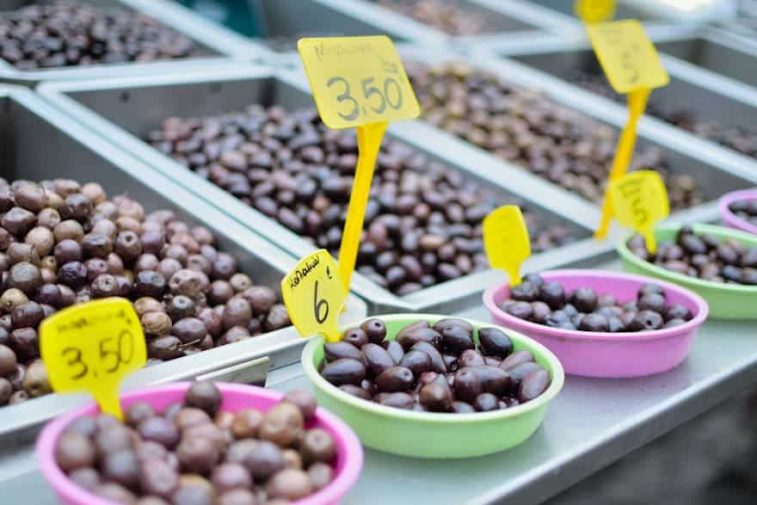
A lot of restaurants in Athens offer views of the Acropolis but one of my regulars there, because of its superb views, day and night, and outdoor seating, is the GB Roof Garden Restaurant, atop the historic (and quite beautiful) Grande Bretagne. You can have a meal or belly up to the bar (or better yet, snag a bar table on the balcony), sip rose, snack on gourmet Greek tapas, and just breathe. Athens’ Central Market is another great place to sip or snack, in a more boisterous atmosphere.
Ilias Lalaounis was a jeweler who created elaborate and stunning gold jewelry with themes inspired by ancient Greece. It’s worth taking a bling break to swing by his workshop, which has been turned into a jewelry museum. Inside are displays of his yellow gold creations as well as some Olympic torches he designed. When you’re ready to fast-forward in time, head to the museum run by the Basil and Elise Goulandris Foundation. The couple collected 180 works of contemporary and modern art that includes impressionists Claude Monet and Vincent Van Gogh as well as contemporary artists Francis Bacon and Roy Lichtenstein.
Need to know
In January through March, expect daytime temperatures in the high 50s F and lows in the mid 40s. Cruise ships dock at the Port of Piraeus, about seven miles outside the city. If you’re feeling adventurous, take the Pireaus metro to Syntagma Square (otherwise, a taxi is your better bet).
Editor’s Note: Windstar’s Star Legend is offering winter Mediterranean cruises in 2024 and through the season in 2025. The primary itinerary sails between Rome’s Civitavecchia and Barcelona, with calls at Marseilles, Livorno (for Florence) and Nice. A handful of sailings focus on Spanish ports, departing from Barcelona and heading to Valencia, Malaga, Palma de Mallorca, Malaga and Cartagena (along with Gibraltar).





